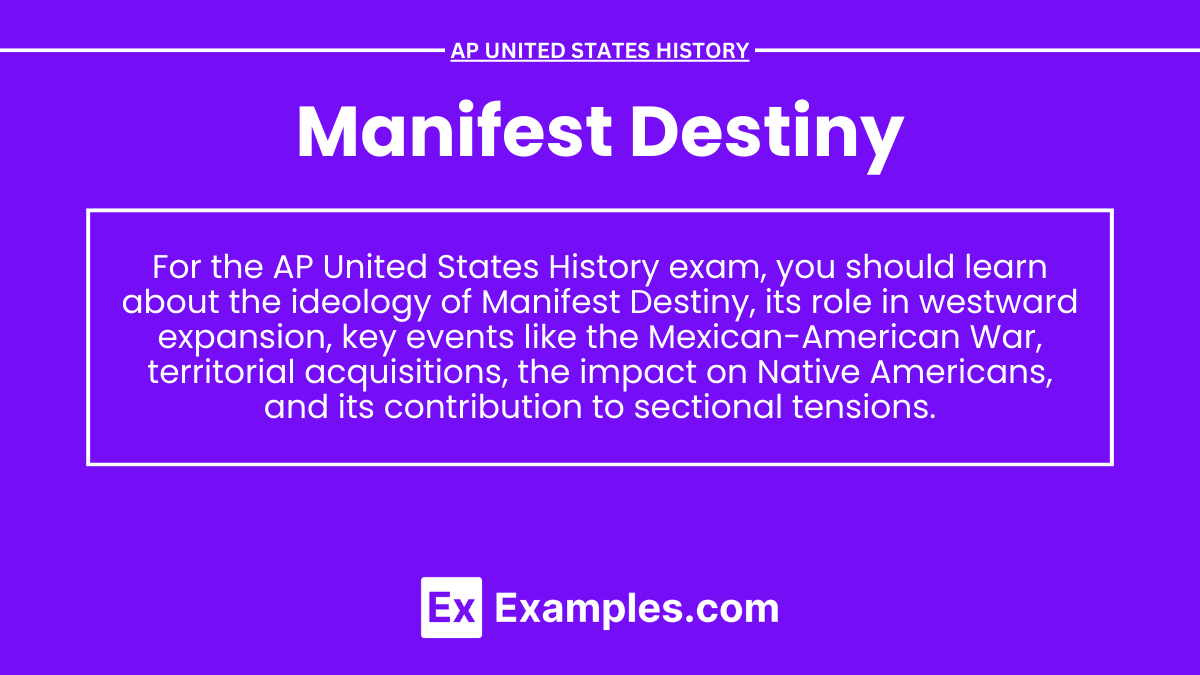In AP United States History, Manifest Destiny refers to the 19th-century belief that the United States was divinely destined to expand its territory across North America, from the Atlantic to the Pacific Ocean. This ideology was fueled by a sense of American exceptionalism and the mission to spread democracy and civilization. Manifest Destiny justified territorial acquisitions, including the annexation of Texas, the Oregon Territory, and the Mexican Cession, while also leading to the displacement of Native Americans and heightened sectional tensions over slavery.
Learning Objectives
In studying Manifest Destiny, you will be expected to understand the ideological foundations and motivations behind the 19th-century westward expansion. The impact of Manifest Destiny on U.S. territorial growth, including the annexation of Texas and the Mexican-American War, will be analyzed. The consequences for Native Americans, the intensification of sectional tensions over slavery, and the role of key figures and events in promoting expansion will be explored. The influence of Manifest Destiny on American identity and foreign policy will also be examined.
Key Characteristics
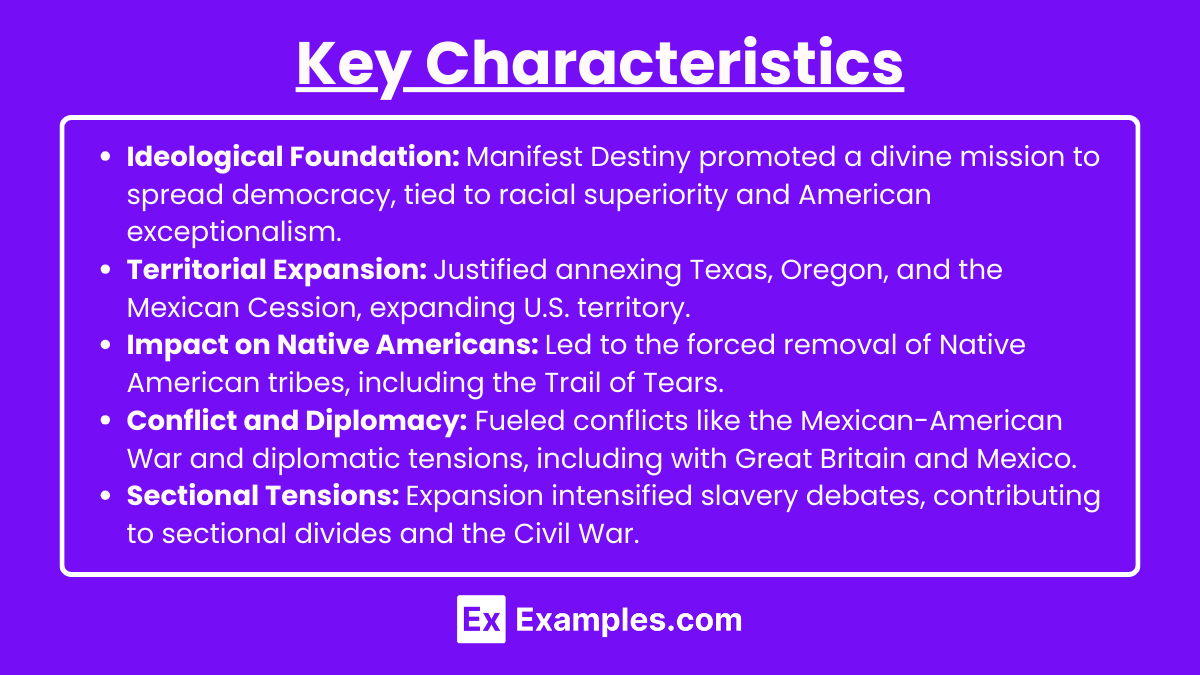
- Ideological Foundation: Manifest Destiny was grounded in the belief that the United States had a divine mission to spread democracy and civilization across the continent. This belief was closely tied to notions of racial superiority and the idea that Americans were uniquely suited to lead this expansion.
- Territorial Expansion: Manifest Destiny was used to justify the annexation of large territories, including Texas, Oregon, and the Mexican Cession, which included present-day California, Nevada, Utah, Arizona, and New Mexico.
- Impact on Native Americans: The expansionist policies associated with Manifest Destiny led to the forced removal of Native American tribes from their ancestral lands, most notably through events like the Trail of Tears.
- Conflict and Diplomacy: Manifest Destiny played a role in conflicts such as the Mexican-American War and negotiations like the Oregon Treaty. It also heightened tensions between the United States and other nations, including Great Britain and Mexico.
- Sectional Tensions: As new territories were acquired, debates over the extension of slavery into these areas intensified, contributing to the growing sectional divide that eventually led to the Civil War.
Key Events and Policies
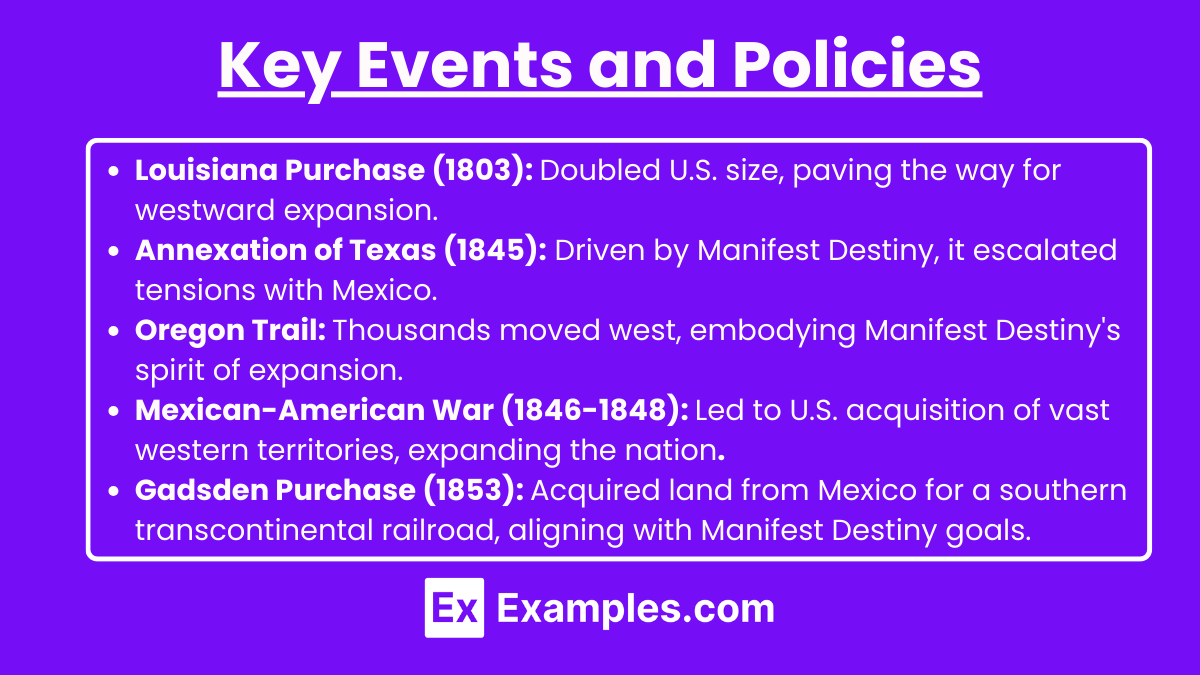
- Louisiana Purchase (1803): Although predating the term “Manifest Destiny,” the Louisiana Purchase doubled the size of the United States and set the stage for westward expansion.
- Annexation of Texas (1845): Texas’s annexation was a direct result of Manifest Destiny, leading to increased tensions with Mexico and eventually the Mexican-American War.
- Oregon Trail: The migration of settlers to the Oregon Territory exemplified the spirit of Manifest Destiny, as thousands moved westward in search of land and opportunity.
- Mexican-American War (1846-1848): Fueled by Manifest Destiny, this war resulted in the U.S. acquiring vast territories in the West, furthering the nation’s continental reach.
- Gadsden Purchase (1853): The acquisition of land from Mexico for the construction of a southern transcontinental railroad route, fulfilling the geographic ambitions of Manifest Destiny.
Key Figures
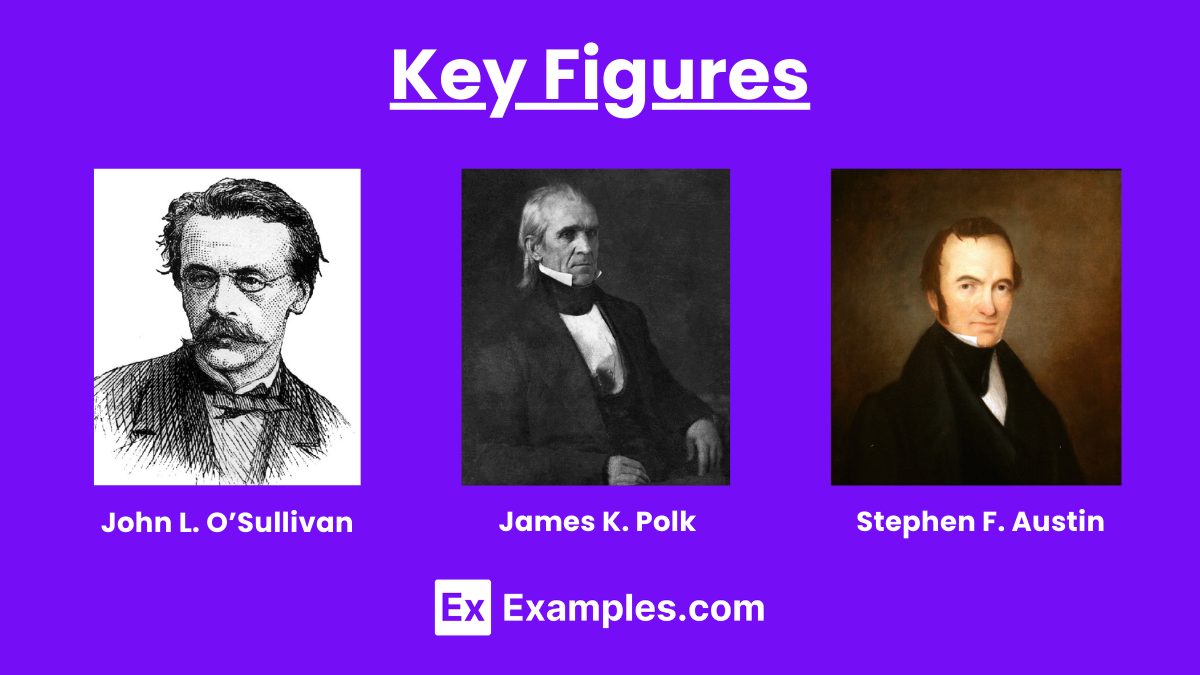
- John L. O’Sullivan: A journalist who coined the term “Manifest Destiny” in 1845, advocating for the annexation of Texas and Oregon.
- James K. Polk: The 11th U.S. President, who was a strong proponent of Manifest Destiny, overseeing the annexation of Texas, the Oregon Territory, and the Mexican Cession.
- Stephen F. Austin: Known as the “Father of Texas,” he played a significant role in the settlement and eventual independence of Texas, contributing to its annexation by the United States.
Impacts of Manifest Destiny
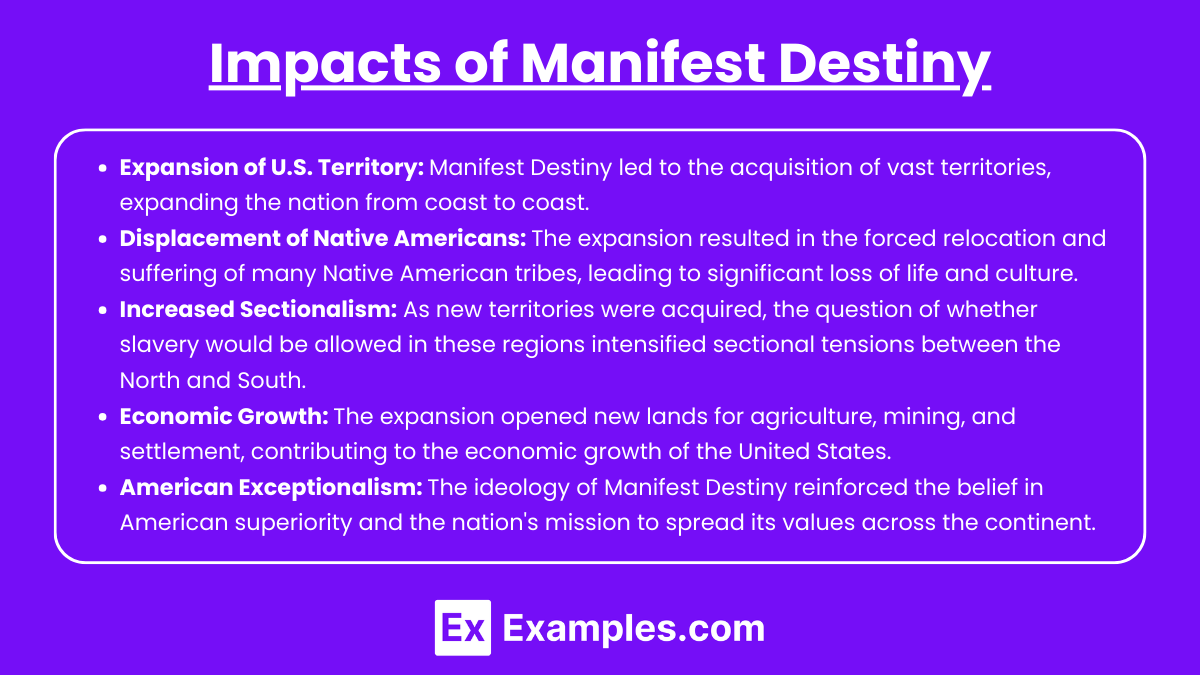
- Expansion of U.S. Territory: Manifest Destiny led to the acquisition of vast territories, expanding the nation from coast to coast.
- Displacement of Native Americans: The expansion resulted in the forced relocation and suffering of many Native American tribes, leading to significant loss of life and culture.
- Increased Sectionalism: As new territories were acquired, the question of whether slavery would be allowed in these regions intensified sectional tensions between the North and South.
- Economic Growth: The expansion opened new lands for agriculture, mining, and settlement, contributing to the economic growth of the United States.
- American Exceptionalism: The ideology of Manifest Destiny reinforced the belief in American superiority and the nation’s mission to spread its values across the continent.
Examples
- Texas Annexation (1845): The annexation of Texas, an independent republic, into the United States was a direct manifestation of the belief in westward expansion.
- Oregon Trail (1840s): Thousands of settlers traveled the Oregon Trail to settle in the Pacific Northwest, driven by the promise of fertile land and a better life.
- Mexican-American War (1846-1848): The war resulted in the U.S. acquiring the Mexican Cession, which included present-day California, Nevada, and Utah, among other territories.
- California Gold Rush (1848-1855): Following the discovery of gold, thousands flocked to California, further fueling westward expansion and the ideology of Manifest Destiny.
- Homestead Act (1862): This act encouraged westward migration by providing settlers with 160 acres of public land in exchange for a small filing fee and a commitment to improve the land.
MCQs
- Which of the following best describes the ideology of Manifest Destiny?
- A) The belief that all people are equal
- B) The idea that America was destined to expand across the continent
- C) The belief in maintaining the status quo
- D) The concept of preserving Native American lands
Explanation: Manifest Destiny was the belief that the United States was destined to expand across North America, spreading its values and civilization. - Which U.S. President is most associated with the concept of Manifest Destiny?
- A) Thomas Jefferson
- B) Andrew Jackson
- C) James K. Polk
- D) Abraham Lincoln
Explanation: James K. Polk was a strong advocate of Manifest Destiny, overseeing major territorial expansions including the annexation of Texas and the Mexican Cession. - The Mexican-American War was largely motivated by which of the following?
- A) Desire to end slavery
- B) Religious freedom
- C) Territorial expansion under Manifest Destiny
- D) Economic sanctions
Explanation: The Mexican-American War was driven by the desire for territorial expansion, a key component of the Manifest Destiny ideology.

